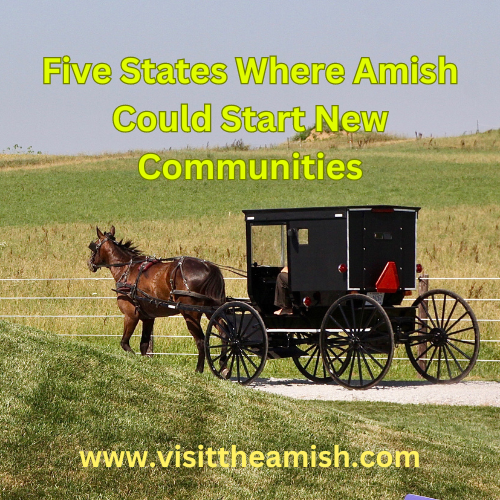Five States Where Amish Could Start New Communities
In the midst of our rapidly evolving modern world, there exists a group of individuals who have chosen to live life differently, guided by a profound commitment to simplicity, community, and tradition. The Amish, a unique and enduring religious community, have captured the fascination of many with their steadfast adherence to a lifestyle that seems frozen in time. Their rejection of many aspects of contemporary technology and consumerism sets them apart, as does their remarkable ability to form self-sustaining, agrarian communities that thrive despite the challenges of the 21st century.
While many Amish communities have been established for generations, there remains a sense of wanderlust among some Amish families who seek to start anew. Whether driven by a desire for more open farmland, a longing for a stronger sense of community, or simply a yearning for fresh opportunities, these intrepid Amish pioneers are exploring new frontiers. In this article, we’ll explore five states across the United States where the Amish are embarking on journeys to establish new communities, preserving their cherished way of life while adapting to the changing landscape of our nation. From picturesque rural landscapes to thriving agricultural hubs, these states offer fertile ground for the Amish to cultivate their unique traditions and build thriving communities in harmony with their steadfast values. Join us on this journey as we discover the five states where the Amish could start new communities and continue their timeless pursuit of a life less ordinary.
1. New Hampshire
Since Vermont has recently drawn interest, and Maine already has five communities of its own, New Hampshire might one day attract its own Amish population.
“Live Free or Die” is the state motto. New Hampshire’s libertarian bent would likely bode well for conservative Amish wishing to avoid conflicts over lifestyle seen in other places.
Also, the overall tax burden in the state is low, though property taxes are rather high.
2. North Dakota
Amish have lived here multiple times–including four communities pre-1950. They already have the other Dakota covered (albeit with a single small settlement).
Amish in non-traditional regions often have to be more flexible with how they make a living (such as those living in Colorado’s San Luis Valley).
This would likely be true in North Dakota. Difficult climate and growing conditions hampered some of those early settlements.
But since non-agricultural business is now a strong part of Amish culture, success here may be more possible today than in the past.
3. Utah
A conservative state perhaps more readily associated with non-mainstream religion than any other. Amish have been steadily creeping in this direction, having settled Colorado and Wyoming in recent years.
Mennonites from South Carolina recently started a ministry in the Utah Valley (an effort encouraged by Christian Aid Ministries).
In fact, the pastor in charge of the new church said “We have a lot of good LDS friends…We haven’t met too much resistance. We have similarities (with the LDS religion) in family values.”
Also, Amish appreciate outdoor beauty. The state actually has a modest dairy industry.
4. Alabama
Another place where Amish have lived in the past–albeit on only one occasion, in the early 1900s. Historically, Amish settlement has been quite rare in the Deep South.
However, Amish today have a strong-ish presence in Tennessee, and a single community in neighboring Mississippi.
In fact, two of the Tennessee settlements are within 30 miles of the Alabama border, so this one seems quite possible.
5. Alaska
This one might sound far-fetched. But Amish have on several occasions tried to settle way off the beaten path (e.g. British Columbia or Paraguay).
And you might be surprised to learn that in 2010 Amish made a scouting trip to the 49th state, though they failed to find a suitable location.
However, all it takes is a few families with a sense of adventure and enough change in the pocketbook to make an attempt.
It’s unlikely a settlement would last for a long time in Alaska, though, which has been the case with most other “remote” settlement tries.



